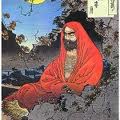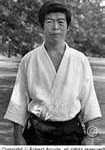 USAF Dojo-cho and instructors were recently asked to submit information regarding their dojo insurance carriers as well as their direct billing companies. This information is now available, and a detailed email has been circulated to all Dojo-cho. This is the beginning of the new resource center for USAF instructors where we will share, based on our own experiences, not just information regarding insurance and billing companies, but also where we shop for dojo supplies, who are our web developers or logo designers, our favorite kids class games, Q&As, and much more.
USAF Dojo-cho and instructors were recently asked to submit information regarding their dojo insurance carriers as well as their direct billing companies. This information is now available, and a detailed email has been circulated to all Dojo-cho. This is the beginning of the new resource center for USAF instructors where we will share, based on our own experiences, not just information regarding insurance and billing companies, but also where we shop for dojo supplies, who are our web developers or logo designers, our favorite kids class games, Q&As, and much more.
Members of the USAF Board have undertaken extensive research into insurance options for USAF dojo. While no solution has been found yet that can cover the broad spectrum of our needs, we are talking with a company right now about a few possibilities and a brief questionnaire may be circulated shortly.
As the success of this new resource is based on our group participation, thank you to all who provided the information which helped launch this exciting project. We each hold much knowledge based on our own personal experiences teaching Aikido and running a dojo, and exchanging this will create a wealth of information while supporting each other in our shared endeavors.




